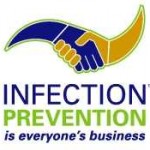Clinically Indicated
Our Vascular Access Team has been looking at how to implement clinically indicated removal of the PIV vs routinely removing the device at 96 hours. We first brought the idea to our Nurse Managers and DON. We wanted to get

Our Vascular Access Team has been looking at how to implement clinically indicated removal of the PIV vs routinely removing the device at 96 hours. We first brought the idea to our Nurse Managers and DON. We wanted to get

When it come to the Affordable Care Act and reimbursements, we need to understand the programs and what they mean for our facilities: What is Hospital Value-Based Purchasing? The Hospital Value-Based Purchasing (VBP) Program is a Centers for Medicare &

When looking at best practice for changing the peripheral IV, are we considering that we are performing another invasive procedure on our patients? The INS (Infusion Nurses Society) standards published in 2011, states that we no longer need to “routinely” change the patients

Recently the Centers for Disease Control and Prevention (CDC) released its Healthcare Association Infection (HAI) report showing progress in reduction of HAI’s, however there is still room for vast improvement. http://www.cdc.gov/hai/pdfs/stateplans/factsheets/wi.pdf The 2012 occurrence of Central Line-Associated Bloodstream Infections (CLABSI)

Since the 1960’s the Centers for Disease Control and Prevention has been investing heavily in the understand and prevention of central line-associated bloodstream infections. That investment has paid dividends, based on the findings in a study from Health Affairs (http://content.healthaffairs.org/content/33/6/1040.abstract).

The partnering of a hospital and Centurion Medical Products shows great results for Rush-Copley Medical Center. Here is a short article that was published last fall in the Journal of Association for Vascular Access by Donna Matocha, MSN, RN, CNRN,

Patients of all ages and diseases are subject to Infusion Therapy. When patients are admitted to the hospital or are having outpatient procedures, the nurse is the first health care professional that comes in contact with them. When assessing their

Using a “bundle” to decrease infection rates with CVC’s (Central Venous Catheters) has decreased infection rates nationally. Many facilities have implemented best practices along with check lists and kits called bundles to achieve these rates. We have focused on central lines,

AVA Journal article published in 2011 discusses the importance of the securement device for the most common acute invasive procedure, the PIV. With all the PICC’s, Port’s and Central Catheters getting all the attention these days, we must nor forget